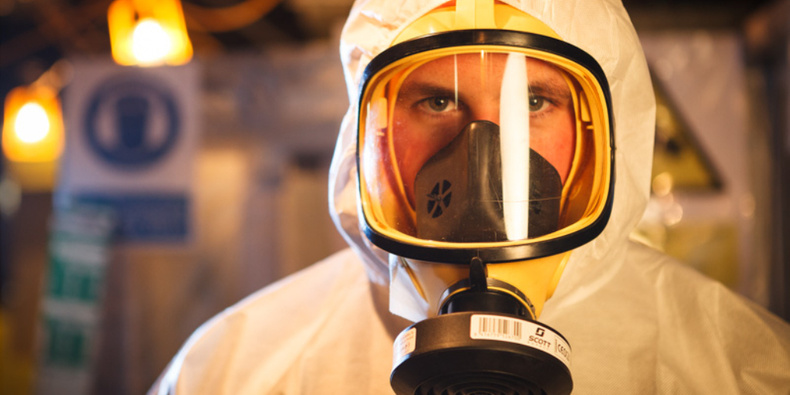How incorrectly wearing respiratory protective equipment risks lives

Respiratory protective equipment (RPE) is one of the most essential pieces of personal protective equipment (PPE) that we use in our line of work because it plays a vital role in protecting workers from the dangers of asbestos dust and fibres.
However, if RPE is to be effective it is essential that you choose the right type of RPE for the task at hand and that you ensure it is fitted correctly.
How important is it for RPE to be fitted correctly?
A few weeks ago, the Health and Safety Executive (HSE) revealed that during a recent investigation, Morecambe Bay NHS Foundation Trust was found to have breached health regulations on RPE worn by staff during the first wave of the Covid-19 pandemic.
After the tragic death of a radiographer in April 2020, Morecambe Bay Trust was given formal written advice having found that not all persons had received adequate face fit testing to ensure that tight fitting respirators, worn as personal protective equipment for certain procedures, sealed adequately to the wearer's face.
What can we learn from this case?
This case shows all too painfully the importance of RPE being used and fitted correctly.
It also highlights the potential damage organisations can face; the case having made the headlines in several leading publications in the north of England.
RPE is an integral part in the arsenal used to protect people from the dangers of asbestos. This case should act as a warning to builders, maintenance staff, electricians and anyone else who may come across asbestos in their day-to-day work to ensure they're wearing RPE correctly.
What RPE should I wear if I am dealing with asbestos?
The HSE has produced a useful factsheet to educate professionals about the types of PPE and RPE they should use if their work involves asbestos.
For most non-licensed work of a short duration, the HSE advises that you should use suitable RPE with a UK-assigned protection factor (APF) of 20 or more. Workers also need to be fit tested to make sure that the RPE fits them properly before the work starts.
It is the duty holder's responsibility to ensure that any tight fitting RPE used by an employee is correctly fit tested by a competent individual.
We would urge anyone using RPE to not leave this to chance - make sure you know how to fit it correctly. If you need any help with this, the HSE has also produced a helpful guide on RPE fit testing which provides information on fit test methods.
What if I fail to use RPE correctly?
If you or your staff are working in the vicinity of asbestos and you fail to wear RPE correctly, you may be putting people's lives at risk.
Exposure to asbestos can cause the cancer mesothelioma, asbestos-related lung cancer, asbestosis which scars the lungs and pleural thickening which alters the lining of the lungs.
Organisations can be prosecuted and heavily fined for breaches and in some cases company owners and managers can be personally fined and even receive custodial sentences.
Acorn has been providing commercial asbestos expertise to organisations across the UK for more than two decades and our management team has more than 100 years of combined experience.
As a result, you can be confident that we have the skills and resources to manage asbestos concerns for clients of all sizes and from all industries.
So, if you need help to deal with asbestos safely contact us.
